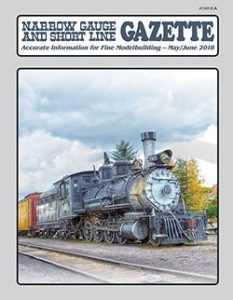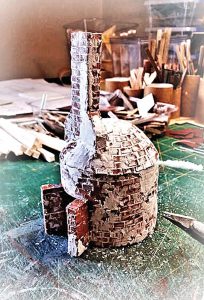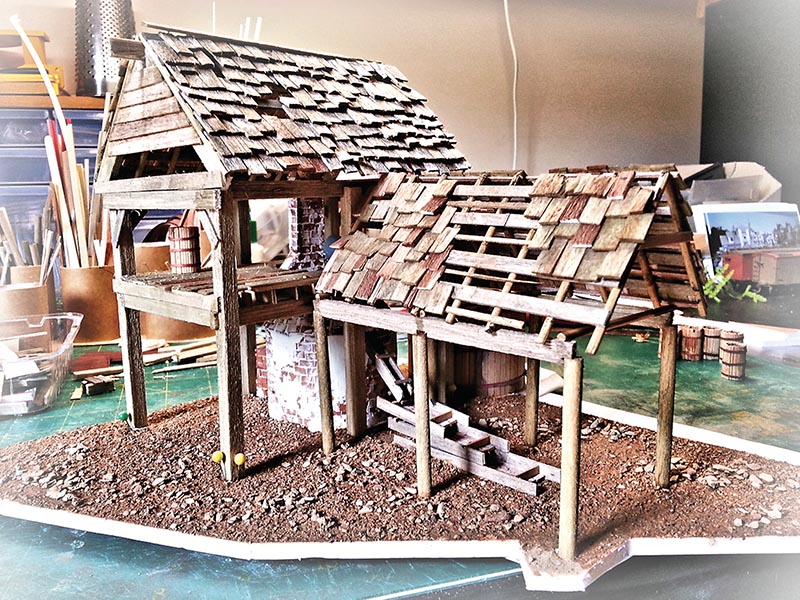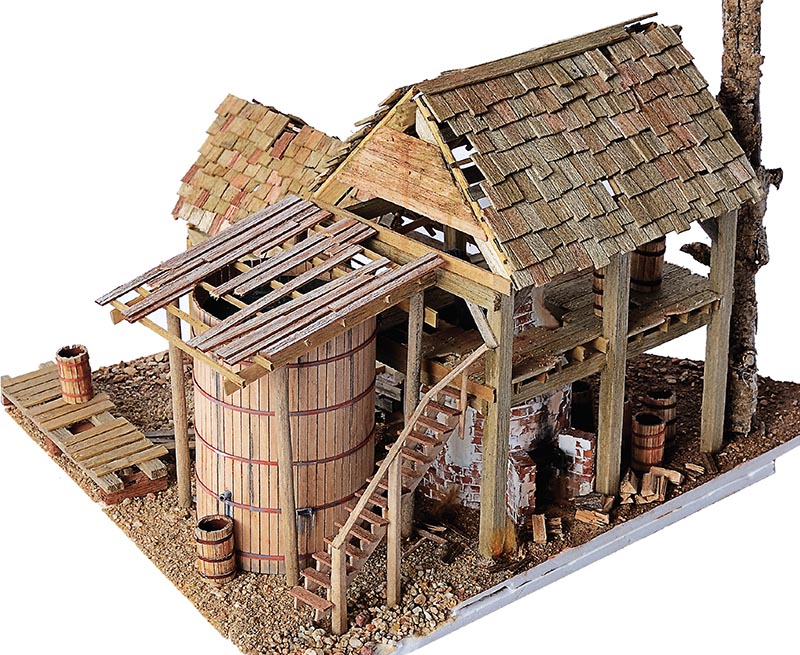 By Bruce Treolar/photos by the author
By Bruce Treolar/photos by the author
I first “discovered” the turpentine industry when I visited the Georgia Museum of Agricultural & Historic Village in Tifton, Georgia. A second visit, a few years later, convinced me to include a turpentine still on my layout.
The Tifton Museum has many unique attractions worth modeling. For example, there are a small, fully operational saw mill, a blacksmith shop, print shop, cotton gin, grist mill, general store, a working turpentine still, and much more. A small Vulcan steam locomotive hauls a train around the site, and stops at the station and service facilities. Do visit the museum’s web site – and do make sure you click on the video.
The turpentine industry was very important in the early days of the United States, and played a key part in the American Revolution by supplying tar, pitch, and turpentine to the navy. Even the British Navy relied heavily on turpentine from the United States. But – rather than write the history of the turpentine industry here – I suggest you visit the New Georgia Encyclopedia or Days Gone By.
 Building My O Scale Turpentine Still
Building My O Scale Turpentine Still
This article is not meant to be a step-by-step “how-to” build a still, but I hope it inspires you to build one! My O scale still is a deceptively large building, but a search of the Internet will find some smaller examples. I made my still fit the space I had on my layout so it did not dominate my scene. I did this by selectively compressing the still I had found at the Tifton Museum. Using a known measurement from my many photos, I sketched up my plans. But, if you decide to build a turpentine still you will have to juggle the compression to suit your layout. So, I won’t go into detail here about any exact dimensions. However some dimensions can’t be compromised too much.
There are three basic parts to my still: the main building, the condensing tank, and the brick kiln. When designing the building, it’s important to take into account the dimensions of the brick kiln. The building needs to fit around the kiln as shown in the photos. Keep in mind the height of the second floor in relation to the kiln, because that is where much of the work was done. All the stills that I researched were two-story affairs. So headroom is important. But so is the size of the brick kiln. So I started my project with the kiln, and built the building around it…



